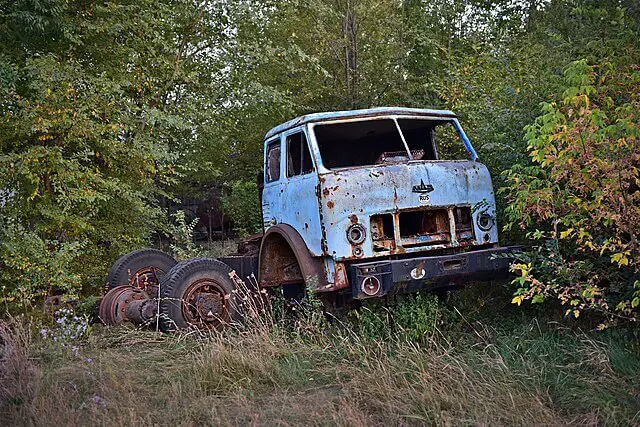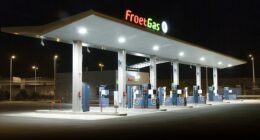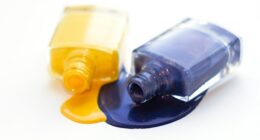Corrosion is the gradual deterioration of materials due to chemical reactions, while erosion is the wearing away of surfaces by natural forces like water or wind.
Corrosion and erosion are two common processes that can significantly impact materials and structures. Understanding the differences between them is crucial for industries such as manufacturing, construction, and infrastructure. While corrosion involves the gradual deterioration of a material due to chemical reactions with its environment, erosion refers to the wearing away of a material’s surface through mechanical forces.
During corrosion, a material, usually a metal, comes into contact with a corrosive environment, leading to the formation of compounds that weaken the material. On the other hand, erosion occurs when a material is subjected to friction, impact, or the flow of fluids or particles, causing the removal of material layers.
Both corrosion and erosion can have detrimental effects on materials, compromising their integrity and functionality. It is important to differentiate between corrosion and erosion to develop effective prevention and mitigation strategies.
Key Takeaways:
- Corrosion involves the gradual deterioration of a material due to chemical reactions, while erosion is the wearing away of a material’s surface through mechanical forces.
- Corrosion occurs when a metal comes into contact with a corrosive environment, while erosion is caused by friction, impact, or fluid flow.
- Both corrosion and erosion can negatively impact the integrity and functionality of materials in various industries.
- Understanding the differences between corrosion and erosion is crucial for designing effective prevention and mitigation strategies.
- Proper material selection, maintenance practices, and environmental considerations play a significant role in combating corrosion and erosion.
Understanding Corrosion
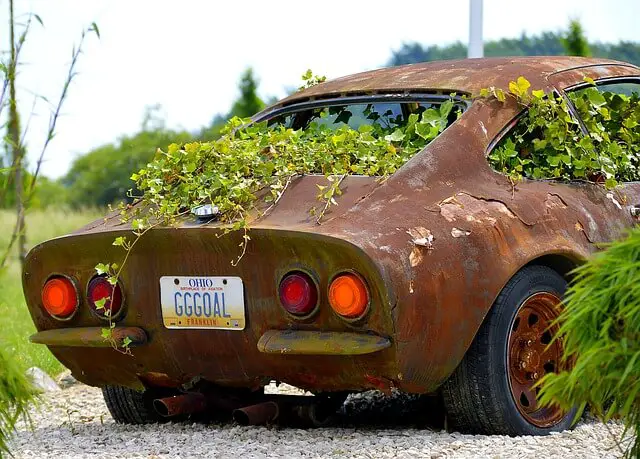
Corrosion is the process of deterioration that occurs when a material, usually a metal, reacts with its environment. It involves chemical reactions between the material and substances in its surroundings, such as moisture, gases, or chemicals. Corrosion can take various forms, including chemical corrosion, electrochemical corrosion, and galvanic corrosion.
Chemical Corrosion
Chemical corrosion occurs when a material reacts directly with a corrosive substance, causing it to degrade. This type of corrosion often occurs in environments where acids or strong chemicals are present. The reaction between the material and the corrosive substance leads to the formation of corrosion products, such as oxides, which weaken the material over time.
Electrochemical Corrosion
Electrochemical corrosion involves the transfer of electrons between different areas of a metal exposed to a corrosive environment. It occurs when the metal acts as an anode and a cathode, resulting in the flow of current through an electrolyte. This electrochemical reaction leads to the formation of corrosion products and the gradual degradation of the metal.
Galvanic Corrosion
Galvanic corrosion occurs when two different metals come into contact in the presence of an electrolyte. In this process, the less noble metal corrodes while the more noble metal remains protected. The difference in the electrical potential between the two metals creates a galvanic cell, with the less noble metal acting as the anode and the more noble metal acting as the cathode.
Understanding the different types of corrosion is essential for identifying the specific mechanisms involved and implementing effective prevention and mitigation strategies. By addressing the underlying causes and taking appropriate measures, industries and individuals can protect materials from the detrimental effects of corrosion and ensure their longevity.
| Types of Corrosion | Definition |
|---|---|
| Chemical Corrosion | Corrosion that occurs when a material reacts directly with a corrosive substance, leading to degradation. |
| Electrochemical Corrosion | Corrosion that involves the transfer of electrons between different areas of a metal exposed to a corrosive environment, resulting in the formation of corrosion products. |
| Galvanic Corrosion | Corrosion that occurs when two different metals come into contact in the presence of an electrolyte, leading to the corrosion of the less noble metal. |
Exploring Erosion
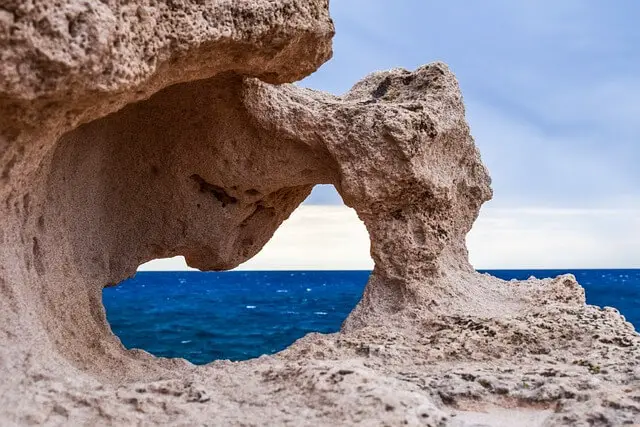
Erosion is a natural process that gradually wears away the surface of a material due to mechanical forces. This phenomenon occurs when materials are exposed to friction, impact, or the flow of fluids or particles.
There are several types of erosion, each characterized by its unique mechanisms and effects:
- Abrasion erosion: This type of erosion occurs when a material’s surface is repeatedly rubbed or scraped, resulting in the gradual removal of material layers.
- Cavitation erosion: Cavitation erosion is caused by rapid changes in pressure within a fluid, leading to the formation and collapse of small bubbles. The intense forces generated by bubble collapse can cause damage to the material’s surface.
- Impact erosion: Impact erosion happens when solid particles or droplets collide with a material, resulting in localized damage and material loss.
To better understand erosion and its impacts, here is a visually engaging table summarizing the types of erosion:
| Type of Erosion | Description |
|---|---|
| Abrasion Erosion | Repeated rubbing or scraping that removes material layers. |
| Cavitation Erosion | Rapid changes in pressure within a fluid cause the formation and collapse of small bubbles, resulting in damage to the material’s surface. |
| Impact Erosion | Collision of solid particles or droplets with a material, causing localized damage and material loss. |
Erosion represents a significant challenge in various industries, including mining, construction, and agriculture. By understanding the different forms of erosion, professionals can implement effective strategies to mitigate its negative effects and preserve the integrity and longevity of material surfaces.
Key Differences between Corrosion and Erosion
While corrosion and erosion are both processes that can result in material degradation, they differ in several key aspects.
Corrosion is a chemical reaction that occurs between a material and its environment, whereas erosion is a physical process that involves the mechanical removal of material.
Corrosion is often driven by electrochemical reactions, whereas erosion is driven by mechanical forces.
Corrosion can occur even in the absence of movement or external forces, while erosion requires motion or impact to wear away the material’s surface.
Additionally, corrosion usually leads to the formation of corrosion products, such as oxides, while erosion results in the removal of material layers.
| Corrosion | Erosion |
|---|---|
| Chemical reaction | Physical process |
| Driven by electrochemical reactions | Driven by mechanical forces |
| Can occur without movement or external forces | Requires motion or impact |
| Formation of corrosion products | Removal of material layers |
Types of Corrosion
Corrosion can manifest in different forms depending on various factors and conditions. Understanding the types of corrosion is crucial for implementing effective prevention and mitigation strategies. Here are some common types of corrosion:
- Uniform Corrosion: This type of corrosion occurs evenly and consistently over a large area of a material’s surface. It leads to gradual degradation without localized damage.
- Localized Corrosion: Localized corrosion is confined to specific areas of a material and can result in the formation of pits or crevices. This type of corrosion can be highly detrimental, as it concentrates the damage in specific regions.
- Pitting Corrosion: Pitting corrosion involves the localized attack on a material’s surface, leading to the formation of small holes or pits. It can significantly weaken the affected material.
- Crevice Corrosion: Crevice corrosion occurs in narrow gaps or crevices where fluid circulation is limited. This type of corrosion can be particularly problematic in areas where materials overlap or come into contact.
- Stress Corrosion Cracking: Stress corrosion cracking is a phenomenon that occurs when a material is exposed to both a corrosive environment and mechanical stress. It leads to the formation of cracks and, in severe cases, structural failure.
Understanding the specific type of corrosion affecting a material is essential for implementing targeted preventative measures and appropriate maintenance practices. By identifying the underlying corrosion mechanism, industries can effectively protect assets and ensure the durability and reliability of their materials and structures.
| Type of Corrosion | Description |
|---|---|
| Uniform Corrosion | Even and consistent degradation over a large area |
| Localized Corrosion | Corrosion confined to specific areas, leading to pit or crevice formation |
| Pitting Corrosion | Localized attack that creates small holes or pits on the surface |
| Crevice Corrosion | Corrosion occurring in narrow gaps or crevices with limited fluid circulation |
| Stress Corrosion Cracking | Cracking and failure caused by the simultaneous exposure to corrosive environments and mechanical stress |
Types of Erosion
Erosion is a natural process that can occur in various ways, depending on the specific mechanisms involved. Understanding the different types of erosion is crucial in order to recognize the potential risks and develop effective prevention strategies. Let’s explore three common types of erosion:
Abrasive Erosion
In abrasive erosion, solid particles, such as sand or grit, come into contact with a material’s surface and gradually wear it away through friction. This type of erosion is commonly observed in environments where wind or water carries abrasive particles, causing gradual degradation over time. Abrasive erosion can lead to surface roughness, loss of material thickness, and compromised structural integrity.
Cavitation Erosion
Cavitation erosion is caused by the formation and rapid collapse of tiny vapor bubbles in a fluid. The collapse of these bubbles generates intense pressure waves that can result in the erosion of nearby surfaces. This type of erosion often occurs in high-velocity fluid flows and can cause significant damage to materials, leading to pitting, surface roughness, and even material failure if left unaddressed.
Impact Erosion
Impact erosion happens when solid particles or droplets collide with a material’s surface at high velocities. This collision creates localized damage and can lead to the removal of material layers. Impact erosion is commonly observed in industries such as mining, where rocks or particles strike the surface of equipment or infrastructure, causing wear and tear. It can result in surface deformation, material loss, and compromised structural integrity.
| Erosion Type | Description |
|---|---|
| Abrasive Erosion | Wearing away of a material’s surface by solid particles through friction. |
| Cavitation Erosion | Erosion caused by the formation and collapse of vapor bubbles in a fluid, leading to pressure waves that damage materials. |
| Impact Erosion | Localized damage and material loss resulting from the collision of solid particles or droplets with a material’s surface. |
Each type of erosion presents unique challenges and requires specific preventative measures. By understanding the mechanisms and characteristics of abrasive erosion, cavitation erosion, and impact erosion, proactive steps can be taken to mitigate their effects and ensure the longevity of materials and structures.
Factors Influencing Corrosion
Corrosion is influenced by various factors that can accelerate or slow down the deterioration process. Understanding these factors is crucial in implementing effective corrosion prevention and mitigation strategies. The key factors influencing corrosion include:
Type of Material
The type of material plays a vital role in determining its susceptibility to corrosion. Different metals and alloys have varying chemical compositions and reactivity levels, affecting their resistance to corrosion. Some materials, such as stainless steel or corrosion-resistant alloys, exhibit higher resistance to corrosion compared to others.
Nature of the Corrosive Environment
The corrosive environment in which a material is exposed significantly impacts the corrosion process. Factors such as moisture, acidic or alkaline conditions, salts, and gases can accelerate the corrosion rate. The presence of corrosive substances in the environment increases the likelihood of chemical reactions with the material’s surface, leading to faster deterioration.
Temperature
Temperature plays a crucial role in corrosion. Higher temperatures can accelerate the corrosion process by increasing the rate of chemical reactions between the material and its surroundings. Extreme temperatures, especially in the presence of moisture or corrosive chemicals, can expedite material degradation.
pH Levels
The pH level of the environment can affect corrosion. Highly acidic or alkaline conditions can initiate or intensify corrosion reactions. The concentration of hydrogen ions in an acidic environment or hydroxide ions in an alkaline environment can contribute to the breakdown of the material’s protective layers.
Presence of Impurities or Contaminants
Impurities or contaminants in the environment can enhance corrosion by promoting electrochemical reactions between the material and corrosive substances. Common impurities or contaminants include chlorides, sulfides, and other chemical substances that initiate or accelerate the corrosion process.
Considering these factors and implementing appropriate preventive measures can significantly reduce the risk of corrosion and prolong the lifespan of materials and structures.
Factors Influencing Erosion
Erosion, the wearing away of a material’s surface, can be influenced by several key factors that contribute to its intensity and impact. Understanding these factors is crucial in developing effective erosion prevention and mitigation strategies.
Type and Hardness of the Material
The type and hardness of the material play a significant role in its susceptibility to erosion. Softer materials are generally more prone to erosion than harder materials. Materials with low hardness tend to experience more rapid material loss when subjected to mechanical forces.
Velocity and Nature of the Fluid or Particles
The velocity and characteristics of the fluid or particles causing the erosion can also influence the erosion process. Higher velocities can lead to more severe erosion, as the increased kinetic energy of the fluid or particles increases the erosive forces. Additionally, the size and shape of the fluid or particles can impact the intensity of erosion. Smaller, more angular particles tend to cause more severe erosion than larger, rounder particles.
Temperature
Temperature can affect erosion by influencing the mechanical properties of the material. Higher temperatures can soften materials, making them more susceptible to erosion. Conversely, extremely low temperatures may cause materials to become brittle and more prone to damage from erosive forces.
Presence of Impurities or Abrasive Substances
The presence of impurities or abrasive substances in the fluid or particles can significantly enhance the erosive effect. These impurities or abrasives enhance the abrasive action on the material’s surface, leading to increased erosion rates. Examples of such substances include sand, grit, or other debris in fluids.
To visualize the factors influencing erosion, refer to the table below:
| Factors | Influence on Erosion |
|---|---|
| Type and Hardness of the Material | Softer materials are more prone to erosion. |
| Velocity and Nature of the Fluid or Particles | Higher velocities and smaller, angular particles lead to more severe erosion. |
| Temperature | Extreme temperatures can impact the mechanical properties of materials, affecting erosion. |
| Presence of Impurities or Abrasive Substances | Impurities or abrasive substances enhance the erosive effect on materials. |
Understanding and considering these factors are crucial in designing erosion-resistant materials, implementing appropriate protective measures, and minimizing the detrimental effects of erosion on materials and structures.
Impact on Materials and Structures
Both corrosion and erosion can have a profound impact on various materials and structures. Understanding the detrimental effects of these processes is crucial for industries and individuals involved in manufacturing, construction, and infrastructure development.
Corrosion, characterized by the gradual deterioration of materials due to chemical reactions with the environment, can significantly weaken the structural integrity of metals. This can lead to reduced load-bearing capacity and potential failures in critical components. Corrosion can manifest in various forms, including the formation of pits, cracks, or rough surfaces, which further accelerate the corrosion process. Moreover, corrosion not only impairs functionality but also affects the appearance and aesthetics of materials, making them less appealing or attractive.
Erosion, on the other hand, involves the mechanical wearing away of material surfaces through friction, impact, or fluid flow. This process results in the loss of material layers, leading to thinning of structures or components. Erosion can cause wear patterns and surface roughness, compromising the functionality and lifespan of materials. In severe cases, it can even lead to the formation of holes or cracks, which pose significant structural risks.
The impacts of corrosion and erosion on materials and structures can result in costly repairs, maintenance, or complete replacement of affected components. These expenses have direct implications for industries and individuals, as they can lead to downtime, reduced productivity, and increased financial burdens.
To better understand the impact of corrosion and erosion, let’s compare them using the following table:
| Corrosion | Erosion |
|---|---|
| Weakening of structural integrity | Loss of material layers |
| Formation of pits, cracks, or rough surfaces | Surface wear patterns and roughness |
| Impaired appearance and aesthetics | Thinning of structures or components |
| Costly repairs and maintenance | Downtime and reduced productivity |
Mitigation and Prevention
In order to mitigate and prevent both corrosion and erosion, various measures can be implemented across different industries and applications. By employing effective prevention strategies, businesses can prolong the lifespan of materials and structures, reduce maintenance costs, and ensure optimal performance. Let’s explore some key approaches to corrosion prevention, corrosion mitigation, erosion prevention, and erosion mitigation:
Corrosion Prevention Strategies
Corrosion can be prevented by applying protective coatings or paints on the surface of materials. These coatings, such as zinc or epoxy, act as a barrier between the material and its corrosive environment, significantly reducing the contact and reaction. Additionally, cathodic protection methods can be employed, wherein a sacrificial metal or an electrical current is used to divert the corrosion away from the material of interest.
Erosion Prevention Methods
Erosion can be prevented by utilizing erosion-resistant materials, such as alloys or composite materials, that are specifically designed to withstand the erosive forces of a given environment. Furthermore, the application of protective coatings or linings can enhance the resistance of the material to erosion. Proper design considerations, such as incorporating flow control devices or employing erosion-resistant geometries, can also contribute to erosion prevention.
Regular Inspections and Maintenance
Regular inspections and maintenance practices are vital for preventing and mitigating both corrosion and erosion. Periodic inspections allow for the early detection of potential issues and enable proactive intervention before major damage occurs. Adequate maintenance, including cleaning, repair, and applying protective coatings as needed, ensures the continued effectiveness of prevention measures.
Proper Material Selection
The selection of materials with inherent resistance to corrosion and erosion is essential for long-term prevention. By considering the environmental conditions and specific requirements of an application, businesses can choose materials that are compatible with their operating environment and minimize the risk of deterioration.
Incorporating these mitigation and prevention measures into industrial practices can combat the harmful effects of corrosion and erosion, prolonging the lifespan and performance of materials and structures.
| Corrosion Prevention | Corrosion Mitigation | Erosion Prevention | Erosion Mitigation |
|---|---|---|---|
| Protective coatings (e.g., zinc, epoxy) | Monitoring and repair | Erosion-resistant materials (e.g., alloys, composites) | Controlling fluid flow and velocities |
| Cathodic protection | Corrosion inhibitors | Protective coatings or linings | Regular inspections and maintenance |
| Material selection | Localized repairs | Proper design considerations | Proactive intervention |
Future Developments and Research
Ongoing research and development efforts are focused on finding new materials with improved corrosion and erosion resistance. Scientists and engineers are constantly pushing the boundaries to develop advanced coatings, alloys, and composites that can withstand even the harshest environments and exhibit enhanced durability. The integration of nanotechnology and surface engineering techniques enables the creation of materials that possess superior resistance against corrosion and erosion.
Furthermore, there is a strong emphasis on developing monitoring and detection technologies that can accurately assess the extent of corrosion and erosion damage. This enables proactive maintenance and repair strategies, preventing costly disruptions and ensuring the longevity of structures and components.
To further advance the field, future research will delve into understanding the intricate mechanisms and interactions involved in corrosion and erosion processes. By gaining a deeper understanding of these processes, scientists and engineers can develop more effective mitigation strategies tailored to specific applications and industries.
Overall, the future is promising for corrosion and erosion research, with an ongoing commitment to innovation and continuous improvement. The development of new materials, enhanced monitoring techniques, and refined mitigation strategies will play a vital role in preserving the integrity and longevity of structures in various industries.
Image:
Conclusion
Corrosion and erosion are two distinct processes that can have significant consequences for the integrity and functionality of materials, structures, and components. Corrosion, driven by chemical reactions with the surrounding environment, gradually deteriorates and weakens materials over time. By contrast, erosion occurs due to mechanical forces such as friction, impact, or fluid flow, resulting in the progressive wear and removal of material layers.
To effectively address the challenges posed by corrosion and erosion, it is crucial to understand their differences. Corrosion prevention and mitigation strategies typically involve the use of protective coatings, cathodic protection, and careful material selection. Various types of erosion can be mitigated by applying erosion-resistant materials, implementing proper design considerations, and employing protective coatings or linings.
By considering factors such as material properties, environmental conditions, and proactive maintenance practices, industries and individuals can minimize the detrimental impact of corrosion and erosion. Regular inspections, prompt repairs, and the use of advanced technologies for monitoring and detection are vital in ensuring the long-term durability and performance of materials and structures.
In conclusion, understanding the mechanisms and manifestations of corrosion and erosion is key to implementing effective prevention and mitigation strategies. By safeguarding against these processes, industries can optimize the lifespan of materials, reduce maintenance costs, and enhance the safety and reliability of structures and components. To maintain the integrity and functionality of materials and structures, it is crucial to address both corrosion and erosion in a comprehensive and proactive manner.
FAQ
What is corrosion?
Corrosion is the gradual deterioration and destruction of a material due to chemical reactions with its environment, such as moisture, acids, or salts.
What is erosion?
Erosion is the wearing away of a material’s surface through mechanical forces like friction or impact.
What is the difference between corrosion and erosion?
Corrosion is a chemical reaction that occurs between a material and its environment, while erosion is a physical process involving the mechanical removal of material.
What are the types of corrosion?
Examples of corrosion types include uniform corrosion, localized corrosion, pitting corrosion, crevice corrosion, and stress corrosion cracking.
What are the types of erosion?
Types of erosion include abrasive erosion, cavitation erosion, and impact erosion.
What factors influence corrosion?
Factors that influence corrosion include the type of material, the corrosive environment, temperature, pH levels, and the presence of impurities or contaminants.
What factors influence erosion?
Factors influencing erosion include the type and hardness of the material, the velocity and nature of the fluid or particles causing the erosion, temperature, and the presence of impurities or abrasive substances.
What is the impact of corrosion and erosion on materials and structures?
Both corrosion and erosion can weaken materials and structures, leading to reduced load-bearing capacity, surface damage, and potential failures.
How can corrosion and erosion be mitigated and prevented?
Corrosion and erosion can be mitigated and prevented through measures such as the use of protective coatings, cathodic protection, erosion-resistant materials, and proper design considerations.
What future developments and research are being pursued for corrosion and erosion?
Ongoing research focuses on developing new materials with improved corrosion and erosion resistance, advanced coatings, and surface engineering techniques. Monitoring and detection technologies are also being enhanced for better assessment and proactive maintenance strategies.
Source Links
- https://www.sciencedirect.com/topics/physics-and-astronomy/erosion-corrosion
- https://www.mdpi.com/2075-4701/10/2/180
- https://core.ac.uk/download/pdf/24574.pdf
Image Credits
Featured Image By – Aniskov , CC BY 4.0, via Wikimedia Commons
Image 1 By – Daniel Borker from Pixabay
Image 2 By – “>Dimitris Vetsikas from Pixabay
